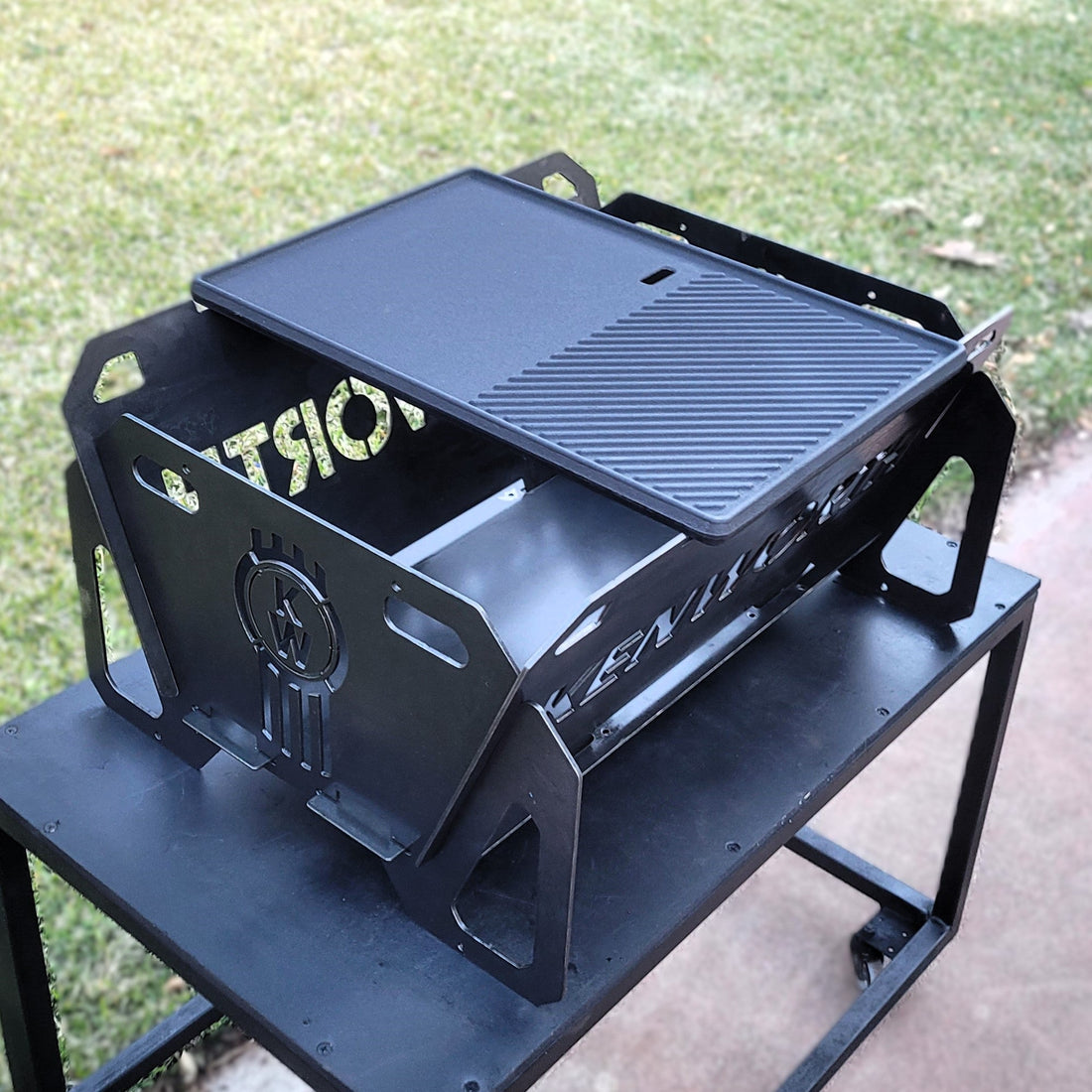
How to Season, Clean, and Care for a Cast Iron BBQ Hotplate
Share
A cast iron BBQ hotplate is a fantastic addition to any outdoor cooking setup. It offers superior heat retention and distribution, creating beautiful sear marks and delivering delicious, evenly cooked food. However, to get the most out of your hotplate and ensure it lasts for generations, proper care is crucial. This guide covers everything you need to know about seasoning, preparing, cleaning, and caring for your cast iron BBQ hotplate.
Why Season Your Cast Iron Hotplate?
Seasoning creates a layer of polymerized oil that protects the cast iron from rust and creates a naturally non-stick surface. This "seasoning" isn't a coating, but rather a chemical bond between the iron and the oil. A well-seasoned hotplate will not only perform better but also last significantly longer.
How to Season Your Cast Iron Hotplate:
-
Clean the Hotplate: Start by thoroughly cleaning the hotplate with hot, soapy water and a stiff brush or chainmail scrubber. Don't be afraid to scrub vigorously to remove any factory coatings or debris. Rinse well and dry completely with a lint-free cloth or paper towel.
-
Apply a Thin Layer of Oil: Use a high-smoke-point oil like flaxseed, grapeseed, or canola oil. Apply a very thin, even layer to all surfaces of the hotplate, including the edges and underside. Too much oil will lead to a sticky, gummy surface. A good way to apply the oil is to pour a small amount onto a cloth and rub it in thoroughly, then use a clean part of the cloth to wipe away any excess. The goal is to have the thinnest possible layer.
-
Heat the Hotplate: Heat your BBQ to a medium-high heat. Place the hotplate on the grill grates. Follow the same oiling process as above, applying a very thin layer of oil. Let the hotplate heat for about an hour, or until it starts to smoke lightly and the surface looks dark and even. Turn off the heat and let the hotplate cool completely on the grill. Repeat the oiling and heating process a few times. Be careful not to overheat the hotplate, as this can damage the seasoning.
-
Cooling and Inspection: After each seasoning cycle, allow the hotplate to cool completely. The surface should be smooth, dark, and slightly non-stick. If it feels sticky or gummy, you likely used too much oil.
Preparing Your Cast Iron Hotplate for Cooking:
Even after seasoning, it's a good idea to preheat your hotplate before cooking. This helps ensure even cooking and prevents food from sticking. Heat the hotplate over medium heat for several minutes before adding any oil or food.
Cleaning Your Cast Iron Hotplate:
-
Clean Immediately After Use: The best time to clean your hotplate is while it's still warm (but not hot).
-
Use Hot Water and a Stiff Brush: Scrub the hotplate with hot water and a stiff brush, chainmail scrubber, or a dedicated cast iron cleaning tool. Avoid using soap unless absolutely necessary, as it can break down the seasoning. If you must use soap, use a mild one specifically designed for cast iron.
-
Remove Stubborn Food Particles: For stuck-on food, you can use coarse salt and a little water to scrub the surface.
-
Rinse and Dry Thoroughly: Rinse the hotplate with hot water and dry it completely with a lint-free cloth or paper towel.
-
Re-oil Lightly: After drying, apply a very thin layer of oil to the hotplate. This helps maintain the seasoning and prevent rust.
Caring for Your Cast Iron Hotplate:
-
Avoid Soaking: Never soak your cast iron hotplate in water. This can lead to rust.
-
Don't Use Metal Utensils: Metal utensils can scratch the seasoning. Use silicone or wooden utensils instead.
-
Re-season as Needed: Over time, the seasoning may wear down. If you notice food sticking or the surface starting to look dull, re-season the hotplate as described above.
-
Store Properly: Store your cast iron hotplate in a dry place. You can place a paper towel between the hotplate and other items to absorb any moisture.
Troubleshooting:
-
Rust: If you see rust, scrub it off with steel wool or a scouring pad. Then, re-season the hotplate.
-
Sticky Surface: A sticky surface usually indicates too much oil was used during seasoning. Scrub the hotplate with hot, soapy water and a stiff brush. Then, re-season it with a thinner layer of oil.
Final Thoughts
Taking care of your cast iron BBQ hotplate ensures better cooking performance, prevents rust, and extends its lifespan. With regular seasoning, proper cleaning, and correct storage, your hotplate will be ready for years of outdoor cooking adventures.
Need a quality cast iron BBQ hotplate for your Flatpack Fire Pit? Check out our Cast Iron BBQ Hotplate at Upper Cut Co!
